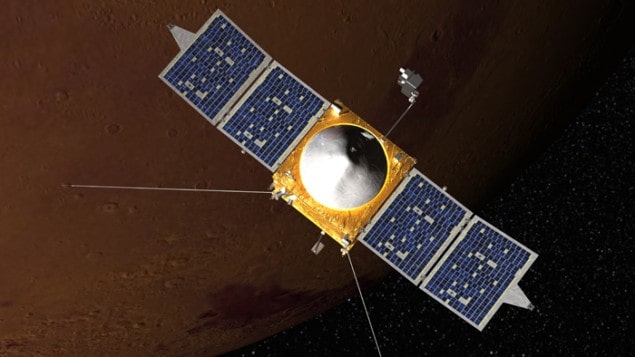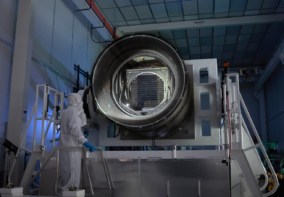
NASA has launched a mission to Mars that will investigate how the planet lost its liquid water and how solar radiation is slowly eroding its atmosphere. The mission – Mars Atmosphere and Volatile Evolution (MAVEN) – was launched from Cape Canaveral Air Force Station in Florida by an Atlas V Centaur rocket at 13:28 local time yesterday.
Costing $671m, MAVEN will spend the next 10 months travelling to Mars, arriving at the red planet in September 2014. When the probe gets there, it will then be put in a highly elliptical orbit in the Martian atmosphere, being 100 km from the planet’s surface at its closest approach and 80,000 km away at its most distant. MAVEN, which took 10 years to design and build, will carry eight instruments including a spectrometer, a magnetometer and a spectrograph.
Mars has an atmosphere that is composed mainly of carbon dioxide (95%) together with argon (2%), nitrogen (1.9%) and oxygen (0.14%). MAVEN will use its instruments to measure the current rate of atmospheric loss – a process that began about four billion years ago when Mars’s protective magnetic field mysteriously disappeared – to understand how the planet transitioned from a warm, wet planet to a dry desert. The information gathered by MAVEN is also expected to help scientists grasp when conditions on Mars might have been most suitable for life to evolve.
“MAVEN joins our orbiters and rovers already at Mars to explore yet another facet of the red planet and prepare for human missions there by the 2030s,” NASA Administrator Charles Bolden said after the launch. “This mission is part of an integrated and strategic exploration programme that is uncovering the mysteries of the solar system and enabling us to reach farther destinations.”
Working in tandem
MAVEN’s launch comes just 13 days after the Indian Space Research Organisation sent its country’s first craft to Mars; it will also study’s the red planet’s atmosphere. Dubbed Mangalyaan, the probe will arrive at the red planet in September 2014, just two days after MAVEN.
“Some of the measurements that [Mangalyaan will] make are similar to those that Maven will carry out and that’s not a bad thing,” Jeffrey Plescia, a Mars researcher at Johns Hopkins University in the US, told physicsworld.com. “The interaction between the solar wind and the Martian exosphere is a dynamic system that varies in both space and time. Having two spacecraft at different locations will provide a much better 3D perspective on the processes and rates.”



